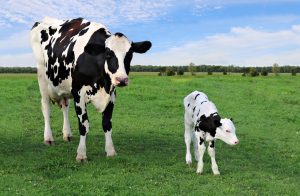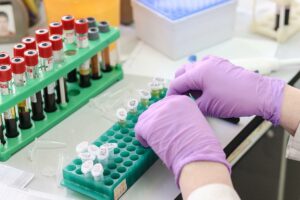Alvaro Garcia
The recent outbreak of the coronavirus COVID-19, has created some confusion in the media and in particular “social media”. Some statements have been published particularly by livestock producers. Conspiracy theories are floating around, asking why there are no vaccines available, when they have some for cattle in their refrigerator?! Similarly, pictures of some popular disinfectants are also posted on the internet because their label states are active against the human coronavirus. Let’s first understand what coronaviruses are, and how long they have been around.
Coronaviruses, named for their crown-like shape, were identified back in the mid-1960s. They are a group of viruses that cause respiratory problems in mammals and birds. As such, commercial animal health laboratories have developed vaccines that are administered to livestock species (e.g. cattle) to prevent coronavirus disease in livestock. A different story altogether, are coronaviruses that have affected humans since recently. Although they are coronaviruses that started in animals, they developed through mutations that gave them the ability to also infect humans in what is called a zoonotic disease (animal-human transmission). Symptoms vary by species causing upper respiratory tract disease in poultry, while diarrhea or scours in cows and pigs.
The ones’ affecting humans, although starting in animals, are different strains for which humans have not developed immunity against. The human immune system, our first barrier against disease, does not recognize them as a health threat. Relatively recent coronavirus infections are SARS, MERS and now COVID-19, which are examples of strains that can be lethal. The question that we address here though is if COVID-19, which started in animals and turned into a zoonosis (animal-human transmission), could also represent a threat for livestock, companion animals, and wildlife. The consequences of this would alter the way we need to view the combating strategy since it could potentially infect livestock as well as becoming endemic (constant presence) in wildlife reservoirs. A 2020 research published in the Journal of Virology conducted by the College of Veterinary Medicine (Wan et el., 2020), of the University of Minnesota, and the Department of Epidemiology of University of North Carolina addressed this possibility.
COVID-19, which started in bats, and SARS-CoV, which started in palm civets, both have a spike-shaped protein receptor-binding domain (RBD), which binds with a host receptor (animal or human), called angiotensin-converting enzyme 2 (ACE2). If this sounds too complicated think of the scene in the movie Independence Day where the flying saucer (RBD) perfectly couples with the alien mother ship (ACE2) to transmit the information (a computer virus to destroy it!). The amino acid sequence in COVID-19 end is very similar to that in SARS-CoV, so they can both couple with the ACE2 enzyme of the host. The “information” of this coupling regulates both the cross-species and human-to-human transmission. What is only required then for intra and inter-species cross-transmission to happen, are warm-blooded species with a similar ACE2 receptor (the human is one). Apparently, the COVID-19 “spike” recognizes the ACE2 in a diversity of animal species, with exception of mice and rats. The residues that are recognized by the ACE2 are amino acids and they vary for the different SARS strains and the COVID-19, determining the ease or not with which they interact with the host ACE2 receptor.
Here’s the problem, although COVID-19 does not recognize the ACE2 receptor in mice or rats, the amino acid sequence suggests it could likely recognize ACE2 from pigs, ferrets, cats, orangutans, monkeys and humans with similar efficiency! The authors even suggest these species can be used as intermediate costs to study the COVID-19 mode of transmission.
At the present time research on the human coronavirus COVID-19 is in its infancy, and very little is known of any potential transmissibility between animal species aside from the original. It has recently been suggested that also the pangolin, another mammalian from Asia, could also be one of the intermediary hosts. Until more research is conducted, result of this experiment suggest it may be worth taking preemptive measures with some livestock, household pets, and wildlife that could potentially be susceptible. Biosecurity measures with employees and visitors to swine production facilities seems to be the first obvious one. Do not allow employees who show signs of sickness and flu-like symptoms to work in proximity of other people or livestock. Encourage sick employees with flu-like symptoms to seek immediate attention and potentially screening for coronavirus. Remember that wild boars will likely share a similar ACE2 receptor with domestic swine and thus could potentially become a reservoir in the wild. With regards to people who have tested positive and keep cats, ferrets or even monkeys as household pets these should be tested as well and eventually quarantined. There was a recent incidence in Hong Kong where a woman that tested positive had his dog also testing mildly positive. Similarly, mustelids such as minks should not be discarded as potential reservoirs of the virus.
Reference
Yushun Wan, Jian Shang, Rachel Graham, Ralph S. Baric, Fang Li. 2020. Receptor recognition by novel coronavirus from Wuhan: An analysis based on decade-long structural studies of SARS. JVI Accepted Manuscript Posted Online 29 January 2020. J. Virol. doi:10.1128/JVI.00127-20.
© 2020 Dairy Knowledge Center. All Rights Reserved.











